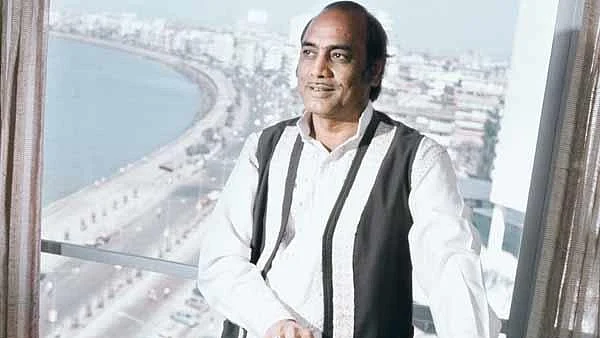Mehdi Hassan: Remembering the king of ghazals
“Shahanshah-e-Ghazal”, Mehdi Hassan passed away in June seven years back, however, his musical legacy continues to live

It was in a heap of long-playing records at home that I had discovered Mehdi Hassan sometime in the late 1970’s. The recording had two ghazals on its two sides, both ‘live’ versions in which the Pakistani maestro had showcased his awe-inspiring mastery over the form. So soothing and skilled was the voice that listening to it was a trek in trance.
Hassan, who passed away on June 13, 2012, was a shared musical boon for India and Pakistan. His followers on both sides of the border continue to revisit his two signature performances that had introduced me to his artistry: Mohabbat Karney Waale Kam Na Honge and Bhooli Beesri Chand Umeedein. Set to slow rhythms and performed with minimal instrumental support, these ghazals, in many ways, revealed the artist at his sublime best. It was his rich background in classical music that enabled him to unveil the nuances in the lyrics, bringing out the melancholy inherent in the songs of unrequited love that formed the cornerstone of his popularity.
Born on July 18, 1927, in the village of Luna in Rajasthan, Hassan, who represented the Kalavant clan of musicians, was trained in classical music by his father Ustad Azeem Khan and his uncle Ustad Ismail Khan. After India’s Partition, he and his family migrated to Chichawatni, a village in West Punjab in Pakistan. The family faced serious financial hardship.
He was around 20 years of age when he started working in a bicycle shop to support his family. This was followed by a stint as a tractor and car mechanic but hardships failed to lessen his passion for music. He continued his ’riyaaz’ religiously, practising various classical forms such as thumri, dadra, khayal and drupad in his free time.
The artist started his musical career as a thumri singer in Radio Pakistan in 1957. It was in 1964 that he experienced stardom after he sang Gulon Main Rang Bhare for the film, Farangi. By the time illness forced him into near-retirement, he had recorded more than 25,000 ghazals and songs for films.
Hassan’s command over light classical forms such as thumri and dadra was beyond dispute; yet, the ghazal was the form he revelled in, singing in his inimitable andaz that mesmerised connoisseurs and laypersons alike. He also interpreted film songs delightfully, giving them a new texture that appealed to listeners of ghazals and, more particularly, his fans who flocked to his concerts to listen to his trademark style of singing.
Rafta Rafta Woh Meri from the film Zeenat acquired a new character when Hassan performed it in concerts. So did Ranjish Hi Sahi from Mohabbat, which Hassan sang with such passion in his concerts that listening to it was a priceless experience. Engrossing was the manner in which he unveiled Raga Yaman in all its purity when he chose to do an alaap with Ranjish Hi Sahi, a quality many music lovers often associate with his performances of non film ghazals.
He was a hugely popular playback singer at his peak, his success disproving theories that his kind of singing wasn’t cut out for the movies. His much-discussed passion for purity and his versatility went side by side, and he even wooed Bengali listeners with his delightful renditions of Bangla songs like Dhako Jotona Noyono Du Haate, and Harano Diner Kotha Mone Pore Jaye.
Apart from his rich, unfaltering baritone that exhibited his skills as a vocalist, Hassan’s other trademark quality was his flawless Urdu pronunciation. For many classically trained vocalists, performing the raga without losing sight of purity is all that matters, resulting in less emphasis on correct and clear pronunciation. Hassan, although a classical vocalist at heart, truly valued the significance of beautifully written lyrics by Mir Taqi Mir or Bahadur Shah Zafar in his ghazals. It was his love for poetry that motivated him to preserve clarity, which was a feature of his singing that set him apart.
Mehdi Hassan wanted to meet Lata Mangeshkar, Dilip Kumar and Amitabh Bachchan, a dream that remained unfulfilled. One year before he passed away, however, he scripted a rare moment in musical history by recording Tera Milna Bahut Accha Lage Hai, a romantic duet with Mangeshkar, for an album aptly titled Sarhadein (Borders). Both artists were in their 80s at that time, and while the ghazal legend’s version was recorded in Pakistan, Mangeshkar’s version was recorded in India. More than anything else, the song reminded us of the lost possibility of recording many more duets when the two matchless vocalists were performing at their peak.
It’s been seven years since Mehdi Hassan passed away, leaving behind a repository of unforgettable classics sung in a voice dripping with honey. Music lovers will be always thankful to the maestro for his immortal gems like Patta Patta Boota Boota, Baat Karni Mujhe Mushkil, Mohabbat Karne Waley Kam Na Hongay and Phool Hi Phool Khil Utthe Mere that they can listen to – until the end of time.
Follow us on: Facebook, Twitter, Google News, Instagram
Join our official telegram channel (@nationalherald) and stay updated with the latest headlines
